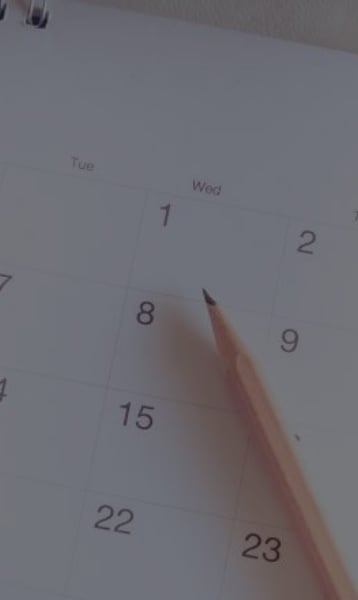This interactive portal improves the analytic experience so you can easily interact with data.
47% of Employees Say They’ll Quit if Employer Orders Return to Office Full Time, According to Integrated Benefits Institute Analysis


Jennifer Santisi
After the upheaval of the last three years, employees have shifted their priorities when it comes to work-life balance and flexibility. Employers have had to pivot and change their workplace policies, while juggling company culture, attraction/retention, and cost—sometimes a seemingly impossible task.
The Integrated Benefits Institute (IBI), a health and productivity research non-profit, conducted an analysis of flexible work models to gain more insight into how to optimize work arrangements for employers, attract and retain talent, and maximize productivity. IBI examined flexible work models’ variations, benefits, challenges, supports, and outcomes through a two-tiered, sequential, mixed-methods study.
Current research shows that almost half (47%) of employees indicate they would quit a job or begin looking for a new job immediately if their employer mandated a full-time return-to-office policy. An IBI study in 2022 found that remote and hybrid employees are 22% more productive, 21% more satisfied, and 51% more highly engaged. While multiple studies suggest that most employees want to retain some form of remote work (as many as 89%), some employers are implementing return to the office full or part-time.
“Many studies have found that flexible work schedules improve well-being, engagement, and organizational commitment. Offering flexibility can mitigate the risks of burnout, and ensure employees are maximizing their productivity,” said IBI Researcher Carole Bonner, MET, MSAS. “Employers that are seeing improved attraction and retention rates, and attracting top talent, are often the ones offering the most flexibility.”
A majority (85%) of employers say they already offer or plan to offer some kind of flexible work arrangement, whether that’s fully remote, or hybrid with varying quantities of days split between home and office. However, IBI’s findings highlight a significant gap between employers and employees regarding the future workplace. Only 15.1% of remote-capable employees expressed a desire to return to the office full-time, while significantly more (22.5%) of US employers with remote-capable employees want their employees back in the office full-time.
Employers cite a number of reasons for wanting employees back in the office, including empty office space expenditures, questions surrounding true productivity measures, and hurting creativity and community amongst workforce. When asked about the top benefits of working at the office, most employees cited socializing (51%) and face-to-face collaboration (47%). Other noteworthy benefits of in-office work include access to better equipment and improved boundaries between work/personal time.
Employees’ subjective wellbeing (SWB), a measurement of happiness, paints a less rosy picture. Those who work fully onsite are less likely to rate their level of happiness as high. Those who work in an office-first arrangement, with 1-2 days working from home each week, are the most likely to have the highest possible SWB rating.
What does this mean for employers?
To provide actionable guidance for employers, IBI consulted HR executives on their recommendations. In those discussions, it was clear that there were differences in experiences in terms of changes, demographic preferences, and push-back from employees.
The areas of focus for employers should be:
- Communication/Technology: Encourage online forums, virtual social gatherings, and team-building activities for virtual employees. Promote instant messaging, video conferencing, and project management.
- Connectedness and Social Interaction: Organize virtual coffee breaks, mentorship, and cross-departmental collaboration. Virtual networking promotes knowledge sharing, innovation, and cross-departmental collaboration.
- Recognition: Recognizing staff achievements online. Virtual events, team shout-outs, and personal messages show gratitude and belonging.
- Health and Wellbeing: Normalize employee self-care and wellness. Offer breaks, mindfulness, and virtual wellness activities.
- Modeling the Culture: Engage in virtual discussions, attend virtual meetings, and communicate openly.
Most importantly, there is no one-size-fits-all solution, and it’s critical to listen to what employees want. Employers can utilize employee feedback to make informed judgments about which arrangements to apply and how to adjust them to their own organizational needs.
For more information the report and infographic are available upon request, please contact Jennifer Santisi at jsantisi@ibiweb.org.
About Integrated Benefits Institute
The Integrated Benefit Institute’s independent research, industry-leading tools and data resources help companies link health-related programs to the outcomes that maximize the contributions of people to productivity and business performance. Founded in 1995, IBI is a national nonprofit research organization and business association serving 1,200 employer and supplier members and their 22 million employees. For additional information, please visit www.ibiweb.org and follow us on Twitter and LinkedIn.
- December 2024 (1)
- November 2024 (1)
- July 2024 (1)
- June 2024 (1)
- March 2024 (1)
- February 2024 (1)
- January 2024 (1)
- December 2023 (1)
- November 2023 (1)
- August 2023 (1)
- July 2023 (1)
- May 2023 (2)
- February 2023 (2)
- January 2023 (2)
- November 2022 (1)
- October 2022 (1)
- September 2022 (1)
- March 2022 (1)
- February 2022 (1)
- January 2022 (1)
- December 2021 (1)
- September 2021 (1)
- April 2021 (2)
- December 2020 (1)
- October 2020 (1)
- September 2020 (2)
- August 2020 (2)
- July 2020 (1)
- April 2020 (1)
- March 2020 (1)
- November 2019 (1)
- September 2019 (1)
- July 2019 (1)
- June 2019 (2)
- May 2019 (1)
- April 2019 (1)
- February 2019 (1)
- November 2018 (1)
- September 2018 (1)
- August 2018 (1)
- June 2018 (1)
- March 2018 (1)
- March 2017 (1)
- February 2017 (2)
- Absence (1)
- Absence Management (1)
- analytics (1)
- Behavioral Health (1)
- Benchmarking (2)
- Benchmarking Analytics (1)
- Benefit Design (2)
- Benefits + Plan Design (2)
- Blog (1)
- Business Performance (1)
- CDHP (1)
- CFO Survey (2)
- COVID-19 (6)
- Depression (3)
- director (1)
- Disability Leave (7)
- Extreme Weather (2)
- Family + Parental Leave (3)
- FMLA (2)
- Health + Productivity Management (3)
- Healthcare (1)
- Healthcare Costs (2)
- lost time (1)
- Manage Absence (2)
- Medication Adherence (1)
- Mental + Emotional Health (4)
- Mental Health (2)
- new hire (1)
- Parental / Family Leave (1)
- Patient-Centered (1)
- Press Releases (50)
- Preventive Care (1)
- Productivity (3)
- Research (2)
- Research Report (1)
- Return to Work (1)
- Sick Leave (2)
- Telehealth (1)
- Telemedicine (1)
- Worker's Compensation (1)
- Workplace Health Programs (1)




























